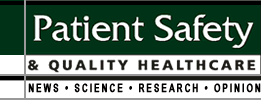 |
 |
 |

March / April 2005

The Patient
in Patient Safety

By Matthew C. Mireles, MPH, PhD
Five years after the Institute of Medicine (IOM) issued its report To Err Is Human (1999) with its all-too-familiar statistics of medical errors in hospitals, little has changed. Most researchers, practitioners, and experts in healthcare have accepted the charge of improving the system or are trying to understand the gravity of this problem and its long-term ramifications on quality of healthcare and patient safety. In a recent survey of 2,000 adults, conducted by Henry J. Kaiser Family Foundation, the U.S. Agency for Healthcare Research and Quality, and the Harvard School of Public Health (American Society for Quality, Feb. 2005, p. 15), 4 in 10 persons reported the quality of healthcare has deteriorated in the last five years; 4 in 10 believe it has remained about the same; and just 1 in 10 indicated that quality has improved.
While subsequent IOM reports stress the need to pursue research in patient-centered medicine (IOM, 2001; IOM 2003), the genesis of patient-centered medicine often is credited to Sir William Osler (1849-1919), an eminent Canadian physician and researcher who practiced medicine in the U.S., Britain, and Canada. Osler tirelessly urged his students and colleagues to "listen to the patient." His philosophy of patient care emphasized listening to patients' own descriptions of their illnesses, empathizing with their concerns, and providing emotional support as well as appropriate medical treatment (Osler, 1932). Osler believed that the physician begins the process of teaching with the patient, continues with the patient, and ends his studies with the patient, using books and lectures as tools, as means to an end.
The medical community today is rediscovering the value of "listening to the patient." Generally, it makes sense that patients are aware of their own health and illnesses, and they might know why they are sick and what treatment may be best for them. When a physician carefully examines a patient and ascertains medical history, the patient usually can provide important information about etiology of a disease or illness. Moreover, the patient also may reveal the best course for treatment, given his or her inclination and likelihood for compliance. Consequently, the key is building and nurturing a patient-physician relationship based on attentive and compassionate listening.
Community of Competence in Healthcare
In most human endeavors, individuals naturally converge to interact and collectively perform a function, such as setting rules or solving a problem. A community develops and evolves according to the skills, abilities, knowledge, confidence, achievement, and experience of its members. When people work in their areas of competence, they are interested in their work and motivated to work at their highest capacity (Smith, 2005). Learning, mentoring, having one-on-one discussions, and sharing experiences with others creates synergy. Smith defines a "community of competence" as a framework and methodology to describe, assess, and combine separate strengths and core competencies of individuals, groups, and organizations into a meaningful whole.
A healthcare team is an example of a community of competence. Typically comprised of a physician, nurses, pharmacist, technicians, nurse's aids, dietician, and social worker caring for a patient in a hospital, members are either selected based on their competencies and expertise, or they self-select based on interest and the ability to perform successfully. The work is highly specialized, as each member performs specific, possibly unique tasks that support the treatment plan. Leadership can rotate through various positions depending on the clinical status of the patient. A nurse might take lead on monitoring the administration of medications and fluids, and a pharmacist may lead when a decision about safe and appropriate dosage is made.
The patient must be a member of this healthcare community of competence. The makeup, purpose, and dynamics of the community — membership, size, level of work performed, and specialization — will not change significantly by adding one more member. However, as a new member, the patient will heighten the focus, leadership, values, and synergy of the group, and enhance the value and timeliness of his or her own care by actively participating in discussion and decision-making. After all, the patient has the greatest stake in the outcome and might be able to advocate for the best care.
At certain times during the course of treatment, an informed patient may take the lead in making decisions about medical choices. For instance, a patient might consent to one preferred treatment plan over another, and, ultimately, a patient may choose not to seek further medical interventions in the case of terminal illness. These decisions then set the course for clinical procedures and actions that are performed or, in the latter case, suspended by the rest of the healthcare team or community.
The Patient's Responsibility for Safety
To become a partner in patient-centered medicine, the patient and family members must assume some responsibility for every step in the healthcare process, which includes keeping appointments, taking medicine as prescribed, and complying with the entire medical treatment plan. One effective way a patient can become more engaged as a partner is to become better informed and prepared at the first step, when medical attention is sought. Diagnosis of medical conditions is considered the most critical phase of care, for it determines all the necessary and subsequent steps for management and treatment of that condition. The patient's cooperation and participation in the diagnostic phase is crucial when information, such as family medical history, co-morbidities, current medications, and special health practices, can make an important difference in clinical evaluations and medical decisions.
Accurate and reliable medical information supplied by the patient and family members can play an important role in ensuring that the care and treatment provided will be appropriate and safe for the patient. But patients, especially elderly patients, often have difficulty recalling information about medical history, particularly unusual or rare medical events.
The ability to recall information from memory is further compromised when the patient is already anxious, sick, stressed, or rushed during the appointment or admitting process. Additionally, patients usually do not volunteer information about special diets, over-the-counter drugs, and alternative therapies because they do not see the connection between their ailment and those supplements and activities outside the conventional medical practice. Likewise, physicians also forget to ask for this information. The patient and family may consider investing some time to thoughtfully compile health information, as well as medical directives and emergency contacts, before any appointment.
Patient Safety Checklist
for Prevention of Errors
It is known that 80% of medical errors are preventable (Edmonds, et al., 2002)! Other industries also have observed a similar proportion in preventable incidents. In aviation, where the risk and consequence of an error have been studied widely, the reduction and prevention of human error have been emphasized continually for safety. The impact of an error in flight operation is too costly to allow or trust performance of sequential tasks by memory alone. Therefore, it is no surprise that practically all operational procedures in aviation are governed and standardized by checklists. These checklists are updated and modified when new procedures are introduced. Pilots, especially, are familiar with printed checklists for every aspect of flight, beginning with preflight and takeoff to approach and landing.
In medicine, physicians and nurses have used checklists for a number of applications. To reduce mistakes, surgeons now are meticulously checking off items before and during surgery to confirm the right patient and proper procedures. Anesthesiologists routinely use checklists to set up anesthesia equipment and to verify operational integrity of the machines before surgery. Nurses have been using checklists on the floors to manage care of patients and facilitate assignments for staff. Therefore, the idea of using a checklist for patient safety should not be too foreign.
The Patient Safety Checklist (see page 23) is a creative tool the patient and family can use to prepare for an upcoming medical appointment, thereby becoming more responsible in providing the most accurate health information. The checklist should be filled out at home where it is more convenient to gather information about current medications and when the patient is most relaxed. If the patient does not understand English or is a minor, someone who can translate or serve as guardian of the minor should complete the checklist. The checklist also may be an appropriate tool for involving a patient advocate, particularly in reviewing important concerns and wishes of the patient.
Consisting of two pages, the checklist is divided into four sections, as follows.
- Section 1: Information about your appointment (who you are seeing, when and where, why you are having an appointment); anthropometric figures, according to gender, are illustrated for the patient to indicate anatomical location(s) of medical concern.

- Section 2: Information about your family or personal contact in case of emergency during your appointment; medical power of attorney and directives.

- Section 3: Information about the patient's current medications (nomenclature, dosage, frequency, etc.). This information should be obtained directly from pill bottles.

- Section 4: Information about your existing medical conditions, allergies to medicine or foods, and medical history.
The Patient Safety Checklist is not intended to replace a standard medical history or admission forms. It should be used as an aid to recall and record medical information and supplement existing forms at the physician's office. All information should be treated as private and confidential. The checklist should be provided at every appointment with a new physician and when specific information, such as current medications, is changed. Presently, the checklist and Instructions for Use are available at no cost at the Web site www.communityofcompetence.com.
Most patients remain apprehensive and concerned about their risk for harm from a medical error. Yet, there are simple and creative measures they can do to make a visit to the hospital or clinic safer. One effective measure is to become more engaged as a partner and to be more prepared at medical consultations and evaluations. The Patient Safety Checklist provides a responsible patient the tool to record and present information about medical history accurately and concisely on one form. This information can contribute to increased patient safety, ensure continuity of care from one physician and facility to another, and improve quality and outcome of medical care.
Matthew Mireles (mirelesmc@earthlink.net) is vice president and director of research for CRG Medical Foundation for Patient Safety, a non-profit 501 (c)(3) medical research institution based in Houston, Texas, that promotes, supports, and translates research into practice relevant to patient safety, quality management, and other health-related areas. Mireles received a bachelor of science degree in biomedical engineering at Texas A&M University, a master of public health degree in occupational safety and aerospace medicine, and a doctorate in epidemiology at The University of Texas Health Science Center School of Public Health. He specializes in injury and occupational epidemiology and has experience in aviation through flight training as a commissioned officer in the U.S. Navy.
References
American Society for Quality. (2005). "Healthcare," p. 18. For additional information and results of the Kaiser survey, visit www.kff.org/kaiserpolls/7209.cfm.
Edmonds, M. J., Pradhan, M. & Runciman, W. B. (2002). Setting priorities for patient safety, 11 Quality and Safety in Health Care 11, 224-229.
Hatlie, M.J. (2004). Consumers and the patient safety movement: Past and future, here and there. Patient Safety and Quality Healthcare 1(2), 6.
Institute of Medicine (IOM). (2000). To err is human: Building a safer health system. L. T. Kohn, J. M. Corrigan, & M. S. Donaldson (Eds.). Washington, DC: National Academy Press.
Institute of Medicine (IOM). (2001). Crossing the quality chasm: A new health system for the 21st century. Washington, DC: National Academy Press.
Institute of Medicine (IOM). (2003). Priority areas for national action: Transforming health care quality. K. Adams & J. M. Corrigan (Eds.). Washington, DC: National Academy Press.
Osler, W. (1932). Aequanimitas (3rd ed.). Philadelphia: P. Blackston.
Smith, E. A. (2004). Communities of competence: New resources in the workplace. In press, The Journal of Workplace Learning, Special Edition, June 2005.

|
 |
 |
 |
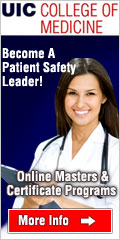

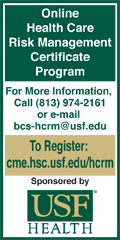



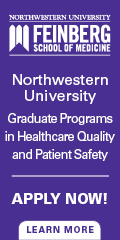

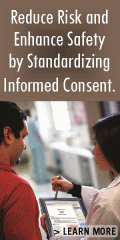

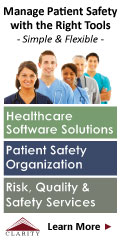

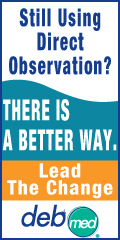





|
 |
